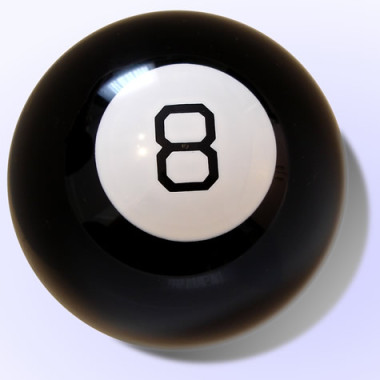Magic 8 Ball ( en.m.wikipedia.org )
I never realized they had 20 sides! Or that one company owned the trademark. Also surprised that there is no deeper meaning to choosing the 8- ball, they just partnered with billiards company.

I never realized they had 20 sides! Or that one company owned the trademark. Also surprised that there is no deeper meaning to choosing the 8- ball, they just partnered with billiards company.
